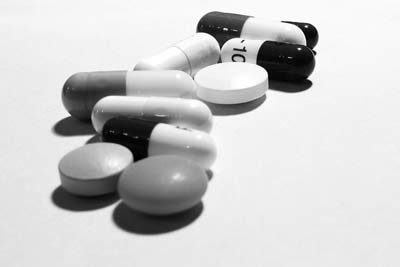
Part of the Series
Fighting for Our Lives: The Movement for Medicare for All
Each year, millions of Americans are dealt the devastating news that they have cancer, and each year, millions of Americans, many of whom are uninsured, have to figure out how to pay for the life-saving treatments that they need.
And unfortunately, that decision can be a very hard one.
Thanks to America’s for-profit health insurance industry, prescription drugs are a big business.
In fact, in 2012, the top 11 global drug companies made nearly $85 billion in net profits.
They made these profits by slapping extraordinary price tags on the prescription drugs and health treatments that Americans are forced to rely on in order to survive devastating diseases like cancer.
But while drug companies have been largely able to get away with robbing Americans left and right for the past several decades, more and more people are speaking up about the outrageous costs of lifesaving treatments.
A group of more than 100 leading oncologists from across the globe have penned a journal article, announcing their plans to start a campaign to force drug companies to slash their profit margins.
In the article, the groups of oncologists ask, “What determines a morally justifiable price for a cancer drug? A reasonable drug price should maintain healthy pharmaceutical industry profits without being viewed as ‘profiteering’.”
But cancer drugs aren’t the only drugs on the market that are gouging the wallets of Americans.
Last year, 11 of the 12 new-to-market drugs approved by the Food and Drug Administration were priced above $100,000 per-patient per-year.
And, Americans pay nearly 50% more for comparable prescriptions in the United States than they would in the UK, France, Germany, Spain and a host of other developed nations.
For instance, look at Nexium, a drug commonly prescribed to treat acid reflux.
In Spain, a prescription for Nexium costs, on average, $18. In France and the United Kingdom, Nexium costs, on average, $30 and $32 respectively.
But here in the United States, a prescription for Nexium costs, on average, a whopping $187, six times as much as it costs in France and the UK.
Lipitor is another commonly prescribed medication in the United States, used to treat high cholesterol. In New Zealand, a prescription for Lipitor costs, on average, just six dollars. And in South Africa and Spain, it costs $11 and $13 respectively. But here in the United States, a prescription of Lipitor costs, on average, $100.
These are just two of the commonly used drugs that are bankrupting Americans.
Other commonly used medications, like Nasonex, Cymbalta, Vytorin and Celebrex also cost far more in the United States than in other countries in the developed world.
Prescription drug pricing in the United States is unregulated, which means that Big Pharma can charge whatever it wants for prescription drugs.
If you ask executives at America’s top pharmaceutical drugs about the high costs of prescription drugs, they’ll tell you that high and increasing drug prices are needed to sustain research and development efforts. But numerous studies have debunked those claims.
One study, by the group Families USA, found that America’s major drug companies are spending more than twice as much on marketing, advertising and administration than they do on research and development.
The report also found, not surprisingly, that the total profits of America’s top pharmaceutical companies far exceed their research and development costs.
Make no mistake about it. Lifesaving medications and commonly prescribed drugs in America today are absurdly expensive here – and only in this country – because Big Pharma is ripping off Americans.
So what can we do about this? How do we drive down the costs of prescription medications?
Right now in Canada, drugs cost a fraction of what they do here.
That’s largely because in Canada, there is a single-payer insurance program that negotiates prescription prices.
As the group Physicians for a National Health Program (a group of doctors campaigning for a single-payer healthcare system) points out, when all patients are under one healthcare system, the payer, or the American citizen, has a lot more clout and influence over the pharmaceutical industry.
For example, the Veterans Administration gets a roughly 40% discount on prescription drugs because of its large buying power. Imagine if that buying power were spread to all Americans. Instead, Republicans put into Medicare Part D that it is illegal for Medicare to negotiate with the drug companies for discounts – they have to pay full retail.
Competition and negotiation – what some would call “the free market” – are the great fears of Big Pharma, and why Big Pharma is so opposed to a single-payer system.
But isn’t it about time that we put the lives of Americans ahead of the padded wallets of Big Pharma’s executives and stockholders?
It’s time to save lives.
We already have a single-payer non-for-profit healthcare system in America – it’s called Medicare. All we need to do is reduce the eligibility age to birth, and give it the ability to negotiate prices with the drug companies.
I call it Medicare Part E – E for Everybody. It could be done with a two-page piece of legislation, and has been proposed repeatedly in Congress only to be blocked by Republicans.
Wake up your friends and neighbors and tell them about it, and call your legislators. Medicare for everybody!
Join us in defending the truth before it’s too late
The future of independent journalism is uncertain, and the consequences of losing it are too grave to ignore. We have hours left to raise the $12,0000 still needed to ensure Truthout remains safe, strong, and free. Every dollar raised goes directly toward the costs of producing news you can trust.
Please give what you can — because by supporting us with a tax-deductible donation, you’re not just preserving a source of news, you’re helping to safeguard what’s left of our democracy.